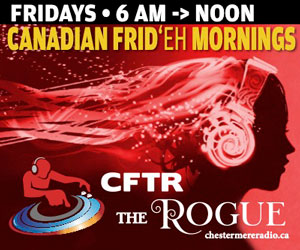Beer nerds are only too happy to tell that the Reinheitsgebot is celebrating its 500th anniversary this year. Those of you who do not Sprechen Sie Deutcsh are welcome to use the English translation, known as the Bavarian Beer Purity Law of 1516, which stated that the only permissible ingredients in beer were water, barley, and hops.
Astute readers may notice the glaring omission of yeast from the list of ingredients, but we can’t really fault the Bavarian noblemen for that, as Louis Pasteur did not discover yeast until 1857.
In other words, the entire fermentation process was basically just a big mystery until then, but everyone was too busy drinking beer to worry much about it.
Up until this time, most beer was being fermented by the Saccharomyces cerevisiae yeast, a top-fermenting ale yeast that worked best at room temperature.
This all changed when a Dutch biologist obtained a very special yeast sample from a Munich brewery, which may have been the first lager yeast.
The good Dutchman set to work trying to determine the difference between the top-fermenting Saccharomyces cerevisiae yeasts used for making ale, and isolated a particular hybrid of the Saccharomyces cerevisiae and Saccharomyces bayanus yeasts.
This new strain is referred to as both Saccharomyces pastorianus in honour of Louis Pasteur, and also as Saccharomyces carlsbergensis in honour of the Carlsberg Brewery’s research laboratory that first isolated and propagated the strain.
The biggest problem in the brewing industry at the time was quality control, as the yeast used by brewers inevitably contained impurities such as bacteria, moulds, and assorted wild yeasts that imparted undesirable flavours to the beer.
In a shocking display of generousity, the Carlsberg Brewery announced in 1883 that they had developed a process to inexpensively propagate a pure lager yeast, and made it freely available to other breweries when their yeast stocks became infected by airborne wild yeasts.
This date marks the birth of the modern brewing industry, and brewers the world over rejoiced at being able to consistently produce a beer with the same flavour profile, without fear of contamination or spoilage from wild yeast strains.
This so-called Carlsberg yeast strain was soon made available around the world, and still forms the basis of all lager brewing today. Yes, gentle reader, pretty much every lager beer available in the world today is a direct descendent or near-clone of the original Carlsberg yeast strain.
Based in Copenhagen, Carlsberg is still a giant in the brewing industry, currently ranked as the fifth-largest brewer in the world.
Their flagship beer is still Carlsberg Pilsner, but the Carlsberg Group produces over 500 different brands, including Kronenbourg, Holsten, Tuborg, Tetley, and many others.
While not a huge player in North America, Carlsberg controls 40% of the lucrative Russian market, as well as significant portions of China and eastern Europe.
The eponymous Carlsberg yeast strain is a bottom-fermenting lager yeast that performs best at 5°C, so modern breweries use stainless steel fermentation vats that are jacketed with glycol chillers, which is much more convenient and precise than the pre-refrigeration days that had fermentation occur in cool underground cellars.
Carlsberg Pilsner is the prototypical pale lager upon which all other megabrewery beers are based, so it should be no surprise to find Carlsberg to be an easy-drinking beer that pours a light golden beer with bright clarity, and a snowy white head with firm lacing.
The malt flavour profile is reminiscent of dry grass, a bit bready or grainy, and a slight citrus zest. Like most macrobrews, there is a very mild hop bitterness with notes of apple and pine needles, and maybe even a bit of citrus.
All in all, Carlsberg Pilsner is not just any old pale lager, but the pale lager that all other megabrews are based on, so if you like any wildly popular beer, odds are that you will like Carlsberg.
While the beer will usually be consumed on its own, it does pair well with lightly seasoned fish dishes, veggie salads, and roast beef with gravy.
All the beer for the North American market comes out of the original brewery in Copenhagen, so you can be assured that the flavour is entirely authentic. Seek one out at your friendly neighbourhood booze merchant, or in a well-stocked drinking establishment near you, and taste the beer that kick-started the modern brewing industry.






